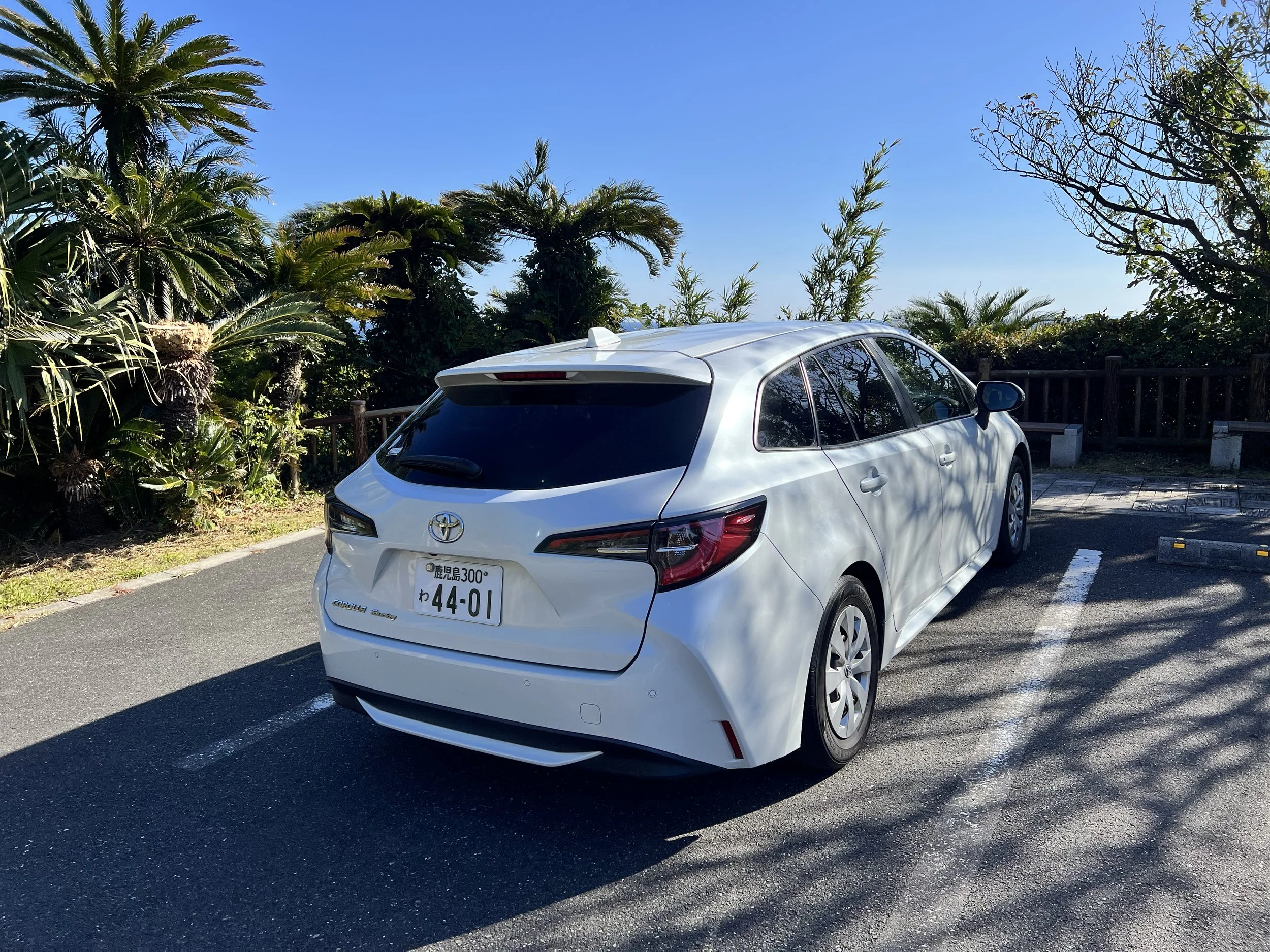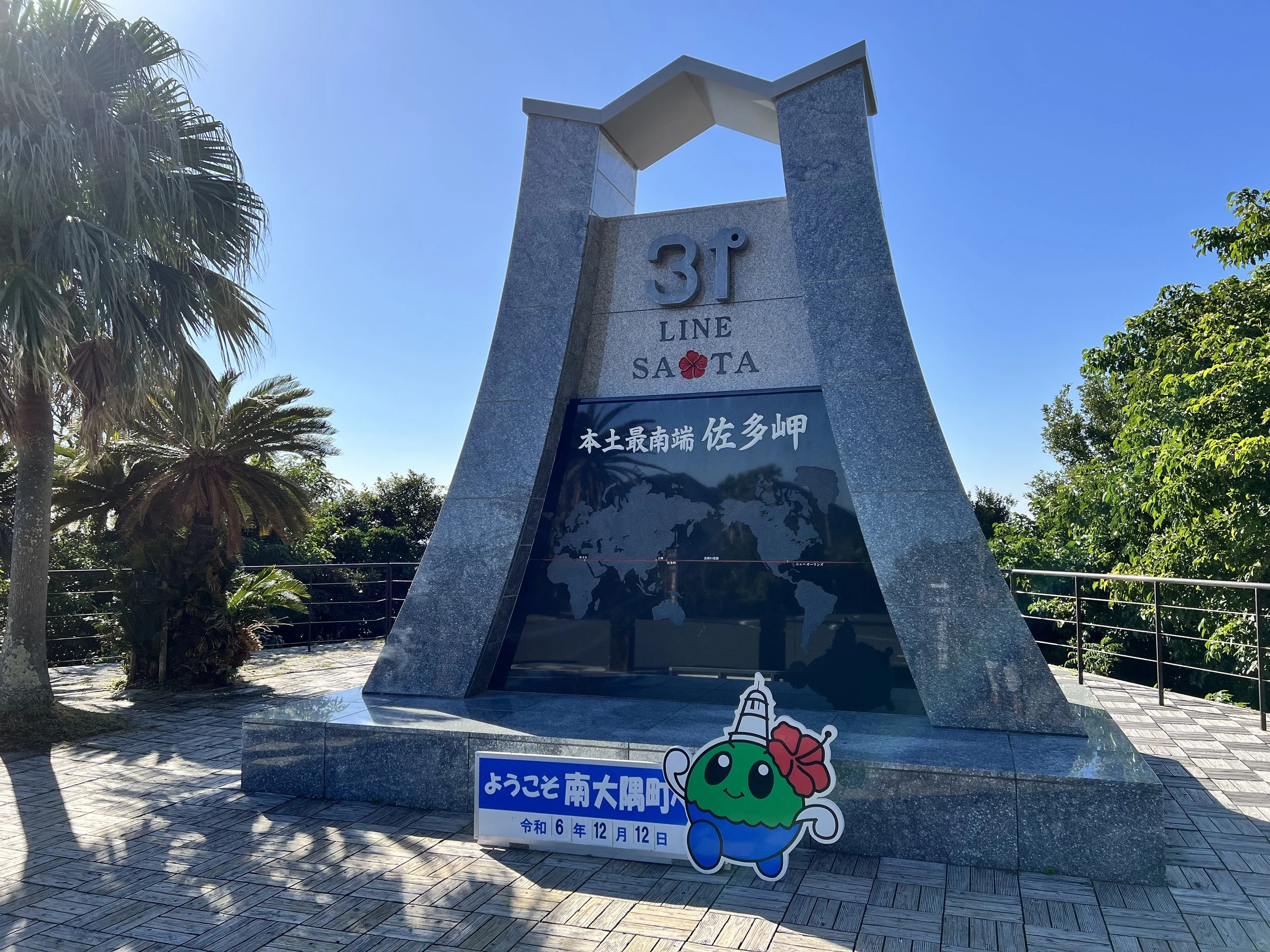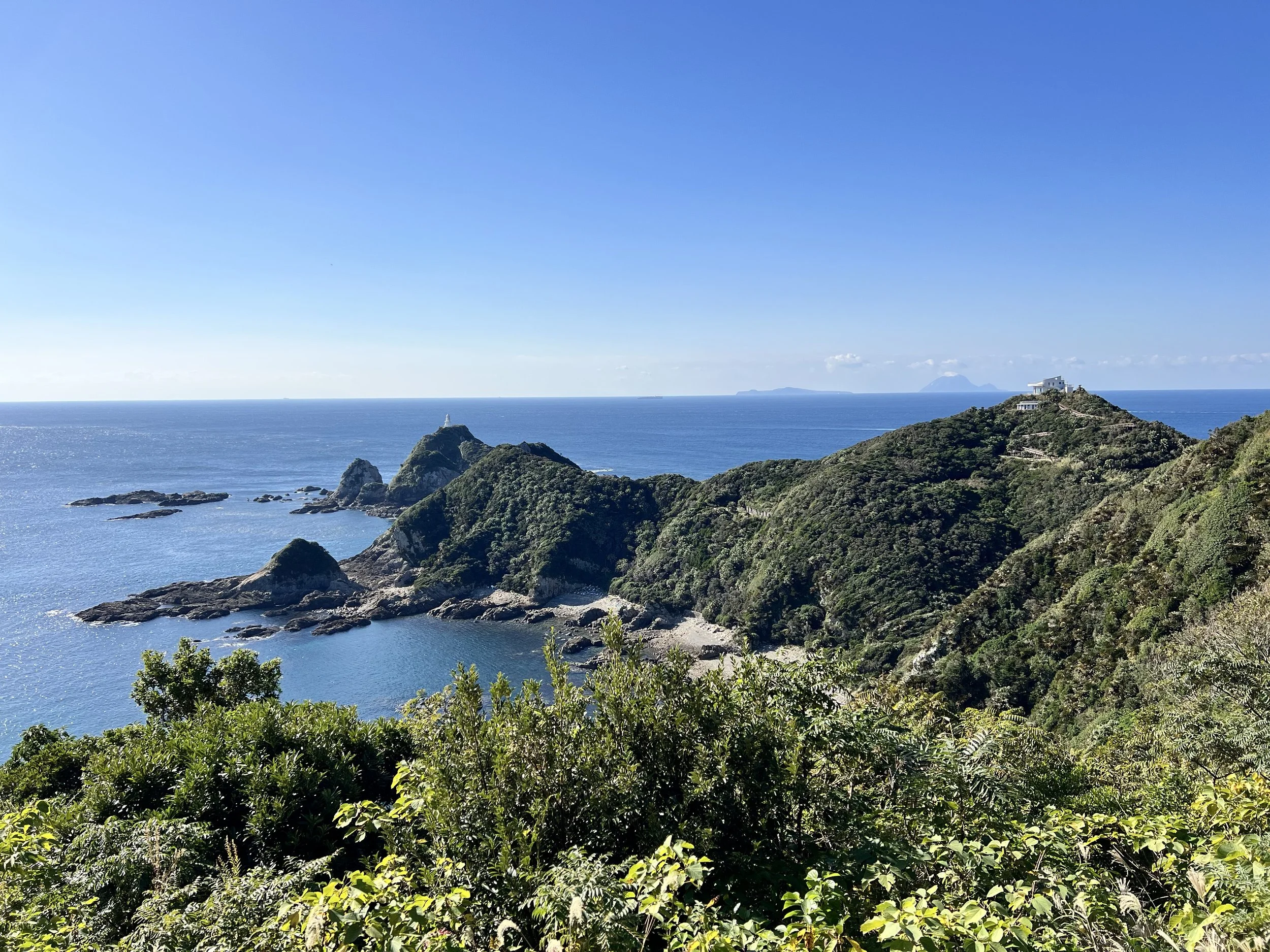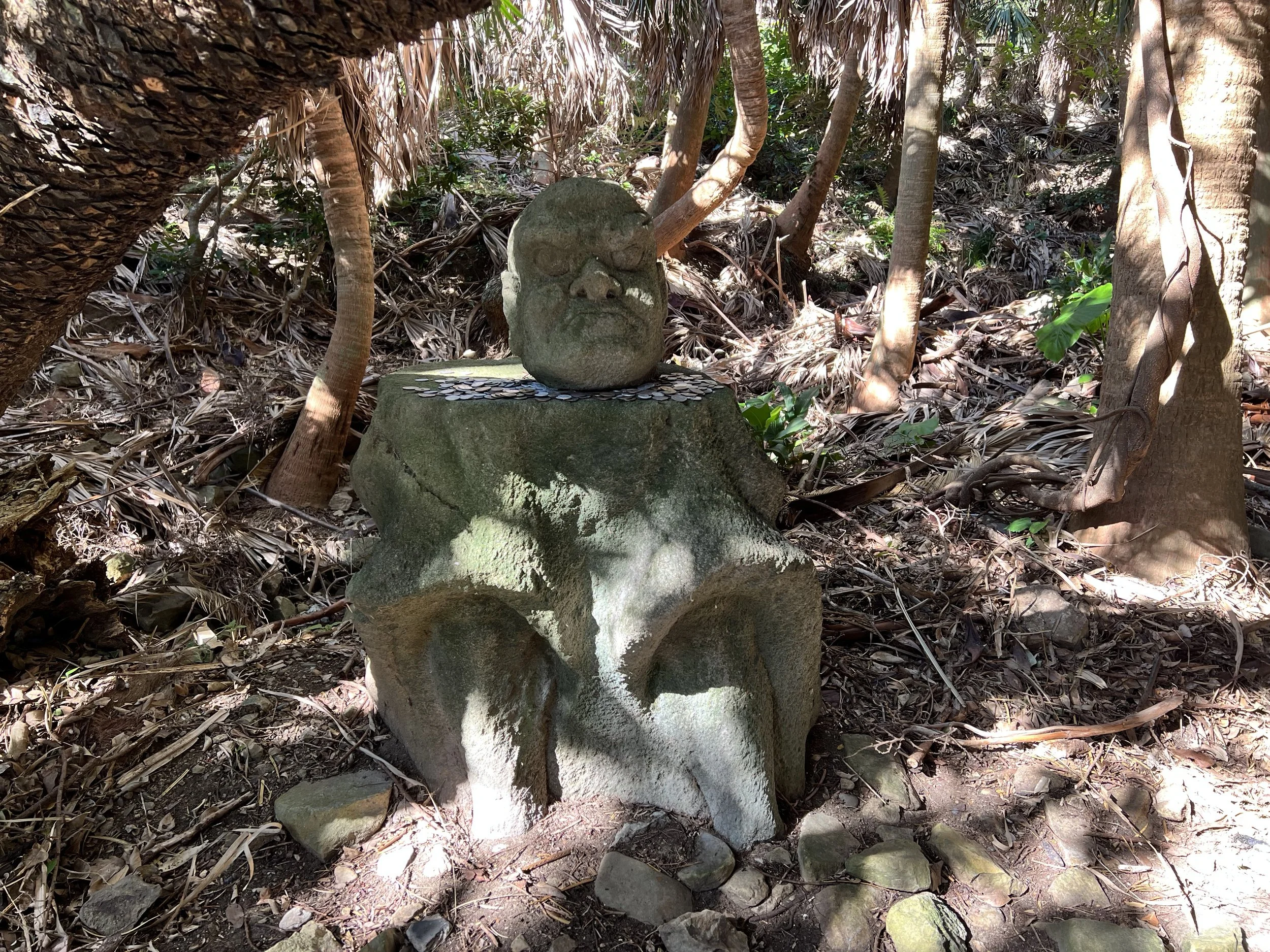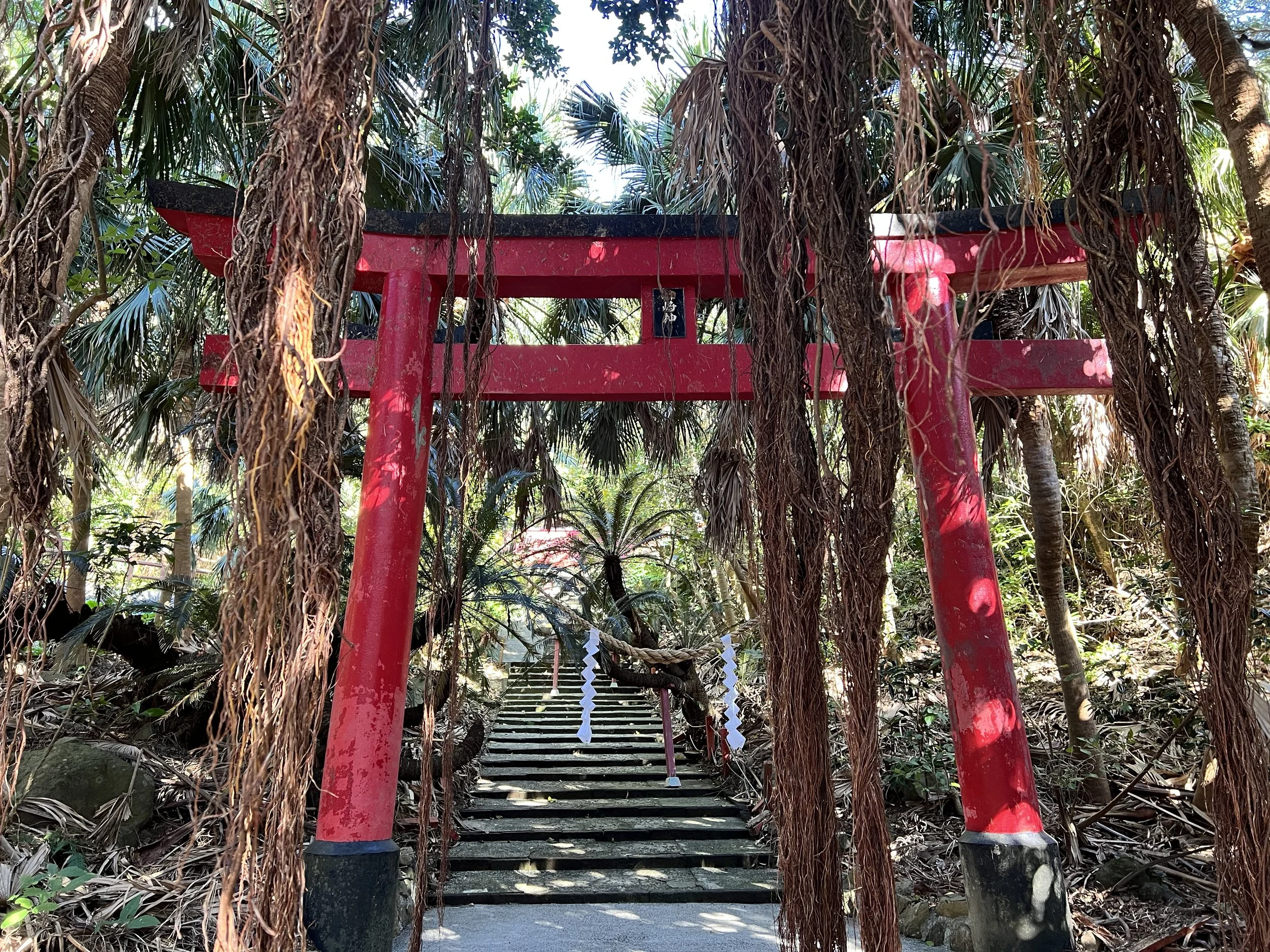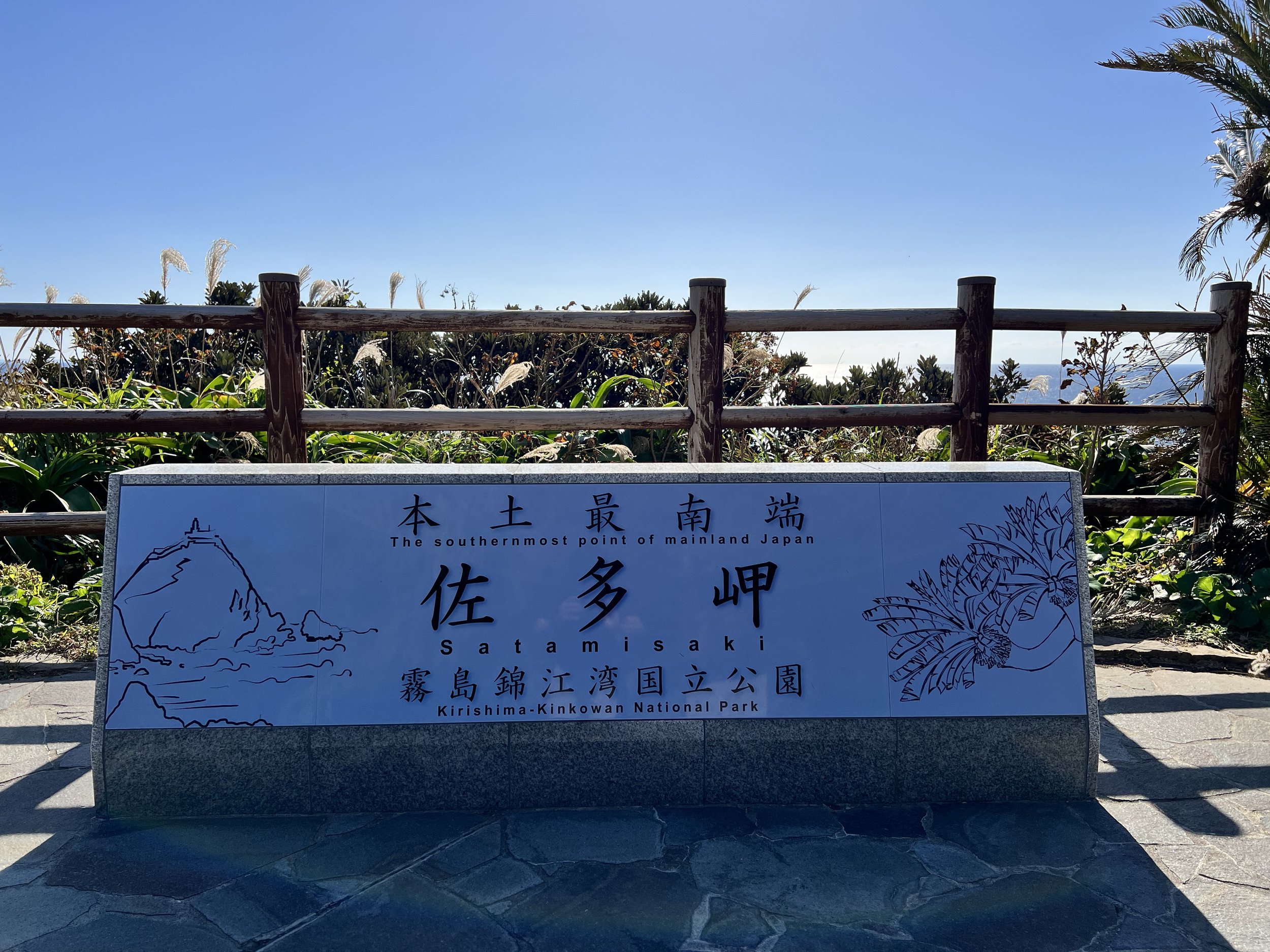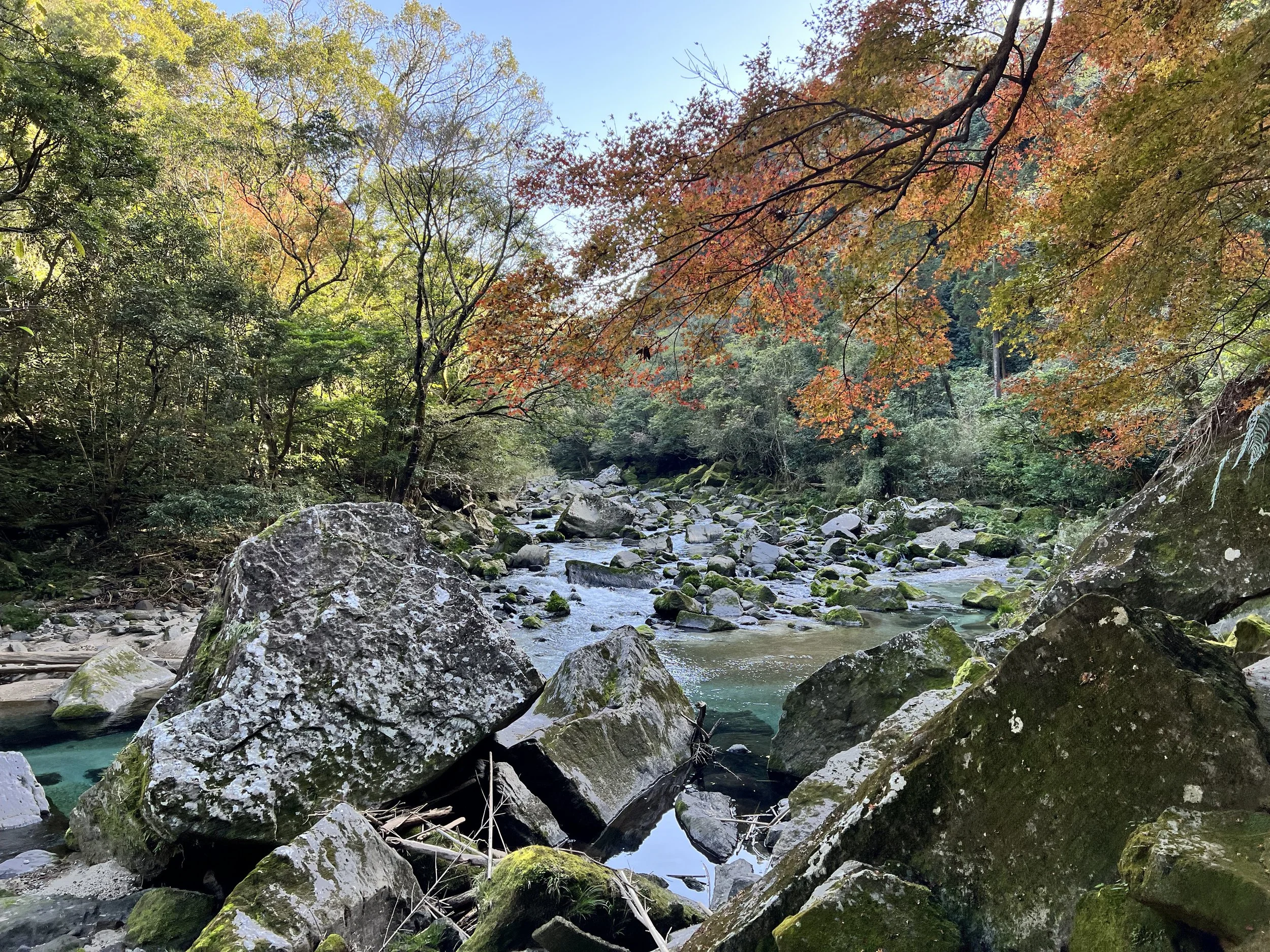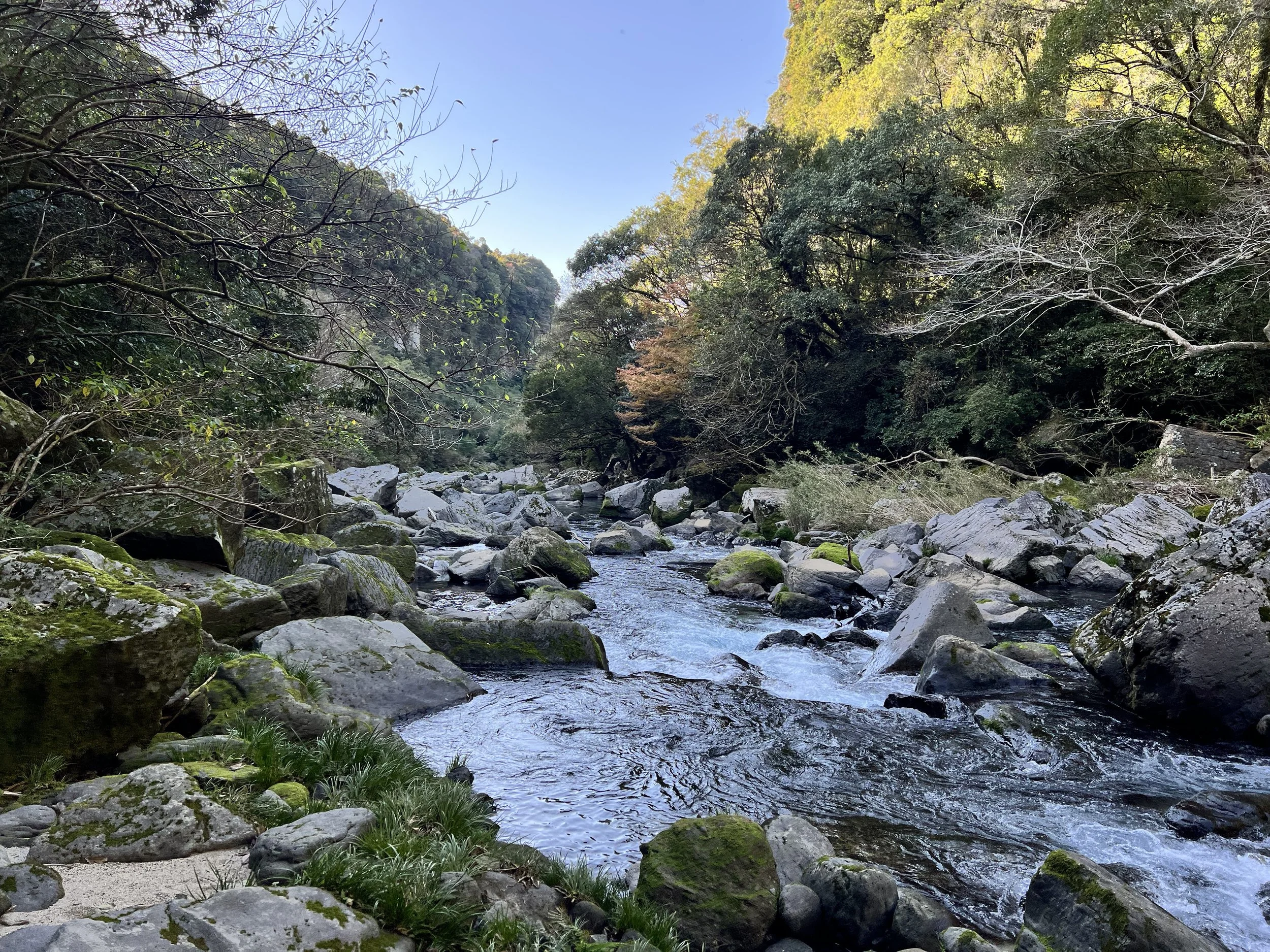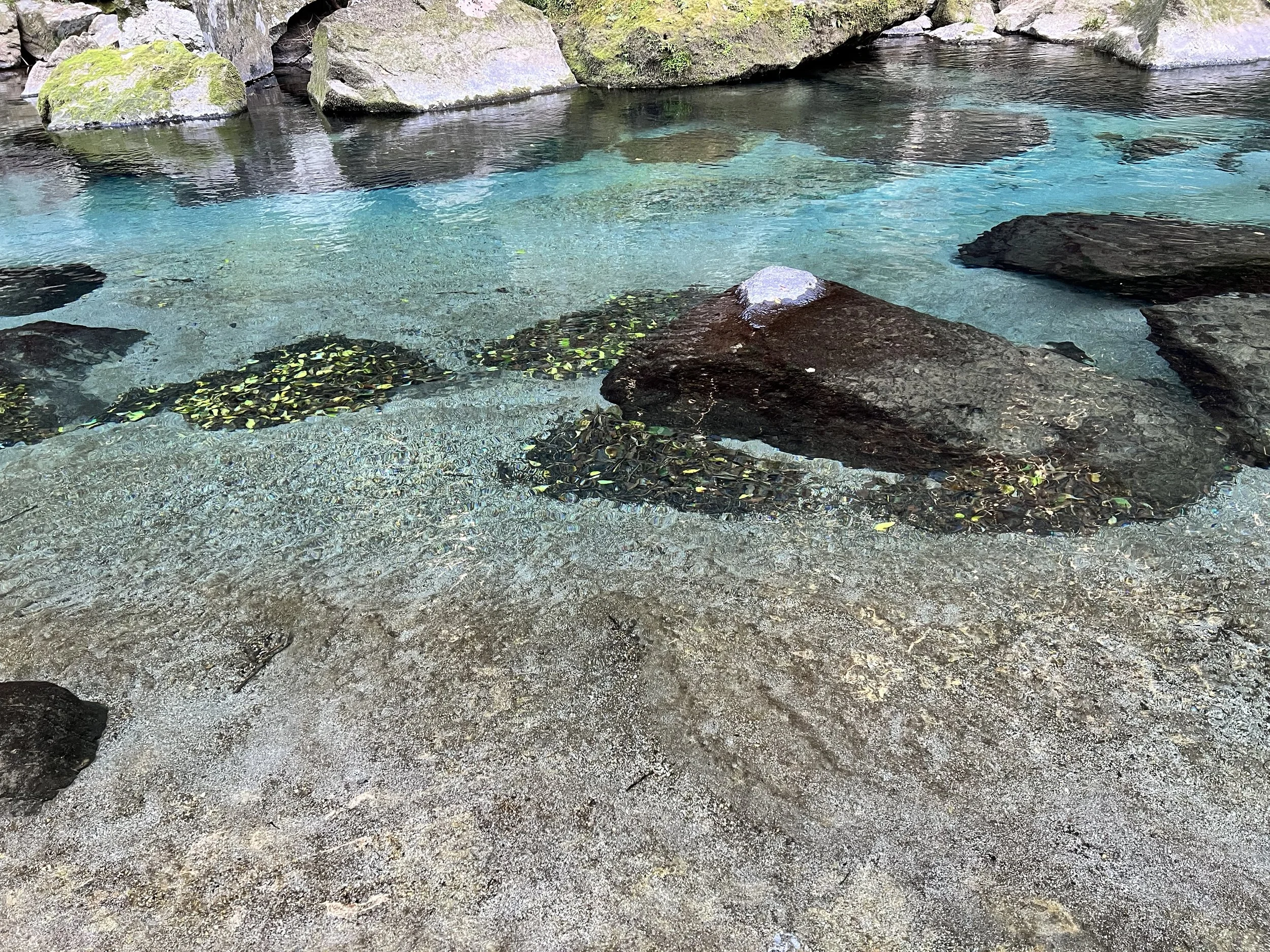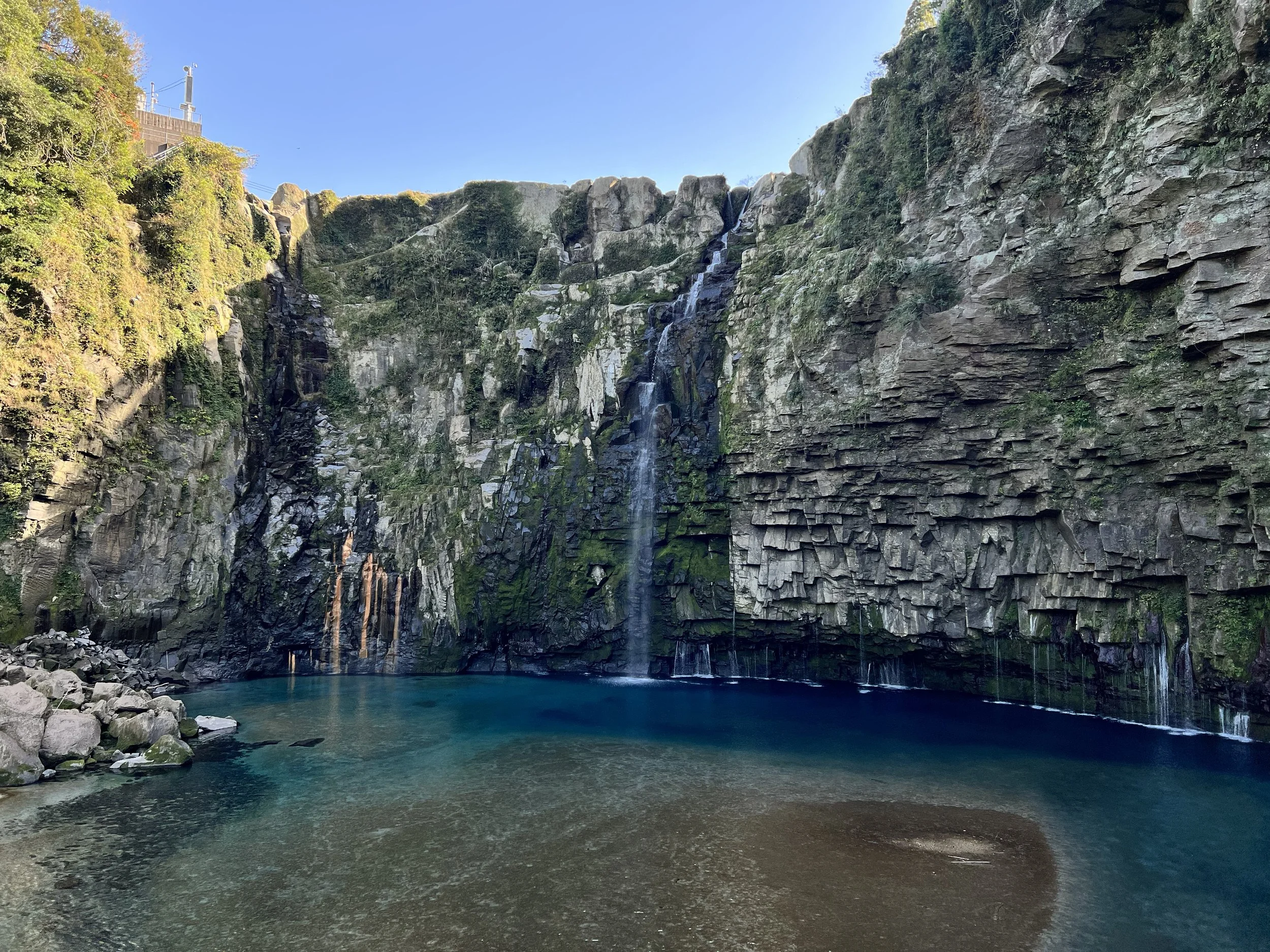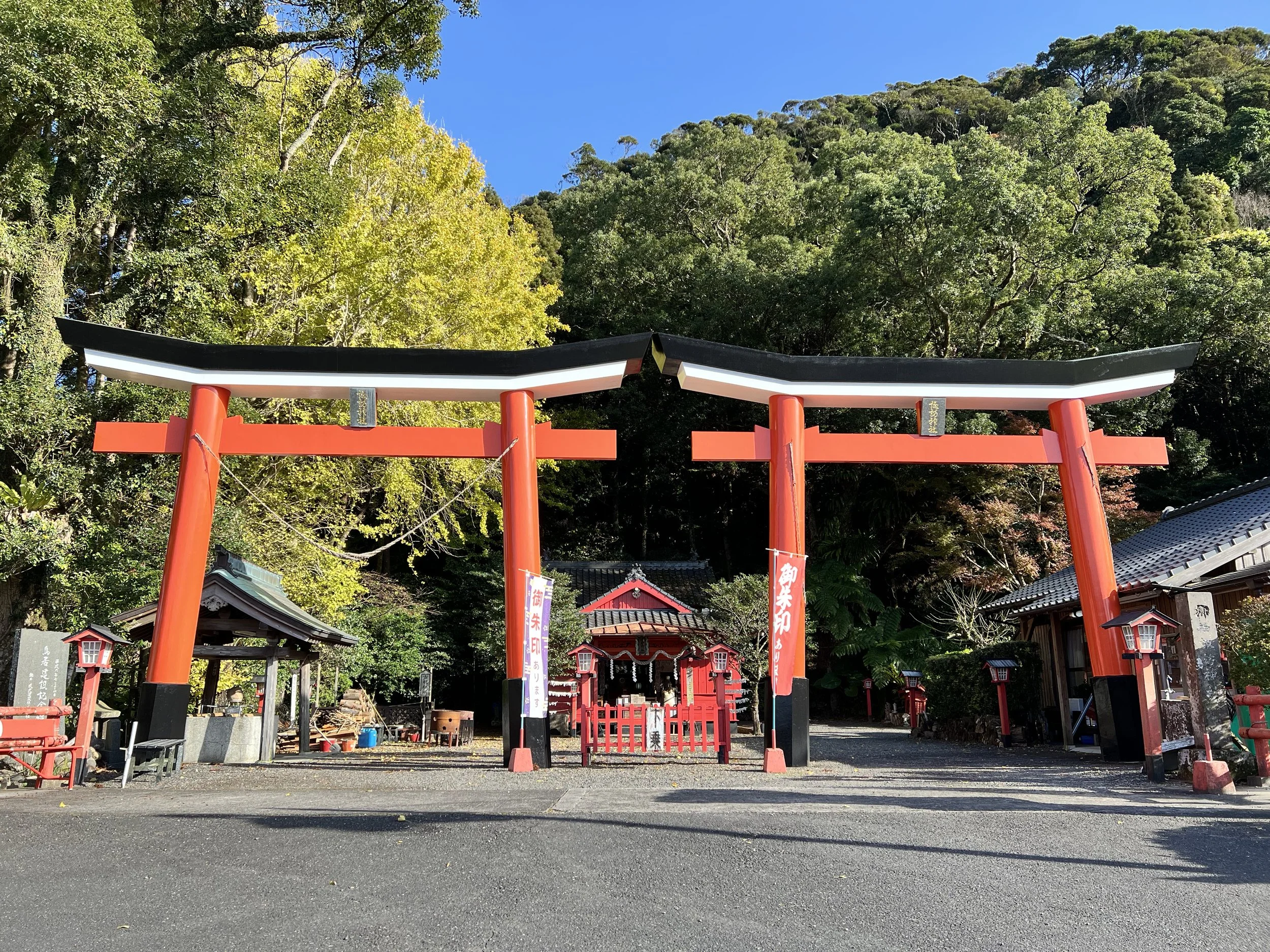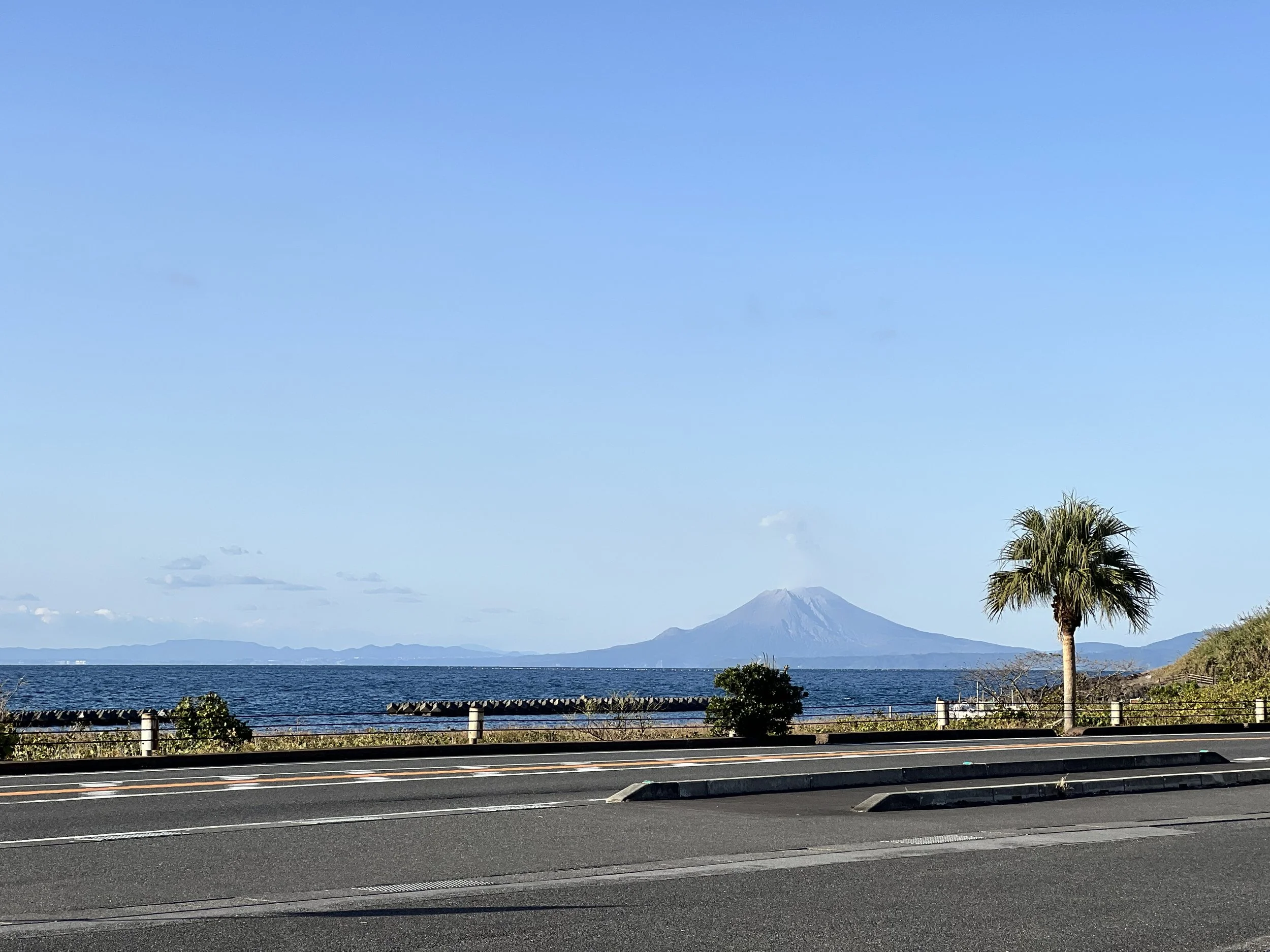Cape Sata - Kagoshima, Japan
I wanted to visit Cape Sata, the southernmost point of Kyushu, but since there was no public transport available, I decided to rent a car. To avoid city driving, I picked up the car in Kokubu instead of Kagoshima City. Booking through the Toyota Rent-a-Car website was simple—I selected the time, car type, insurance, and location. Pickup was quick after they copied my international driver’s license and passport, completed a brief inspection, and had me sign the paperwork. (Note: In smaller towns like Kokubu, being able to speak some Japanese is helpful since English support is limited. Download a translation app if you don’t.)
My first destination was Cape Sata. I chose the scenic coastal route over the toll roads, and the 2.5-hour drive was stunning, with views of Sakurajima Volcano and the ocean along the way. At Cape Sata, the southernmost point in Kyushu, I walked a well-kept trail that passed by a small shrine before reaching the observation deck, where I could see Kaimondake Volcano in the distance.
Next, I drove to Ogawa Waterfalls. The 3 km narrow road to the parking lot was nerve-wracking—it was two-way traffic but only wide enough for one car. After parking and paying the entrance fee, I hiked the 1.2 km trail to the falls. Though not at full flow, the waterfall and its crystal-clear waters were peaceful and beautiful. I also made a short stop at the nearby Kawaminamisuwa Shrine.
On the way back, I visited Kihoku Astronomical Observatory to catch the sunset. The drive up the winding mountain roads was scenic, but I didn’t stay long as temperatures dropped quickly and I wanted to avoid driving in the dark. The return to the rental location was smooth, and after refueling, I returned the car without any issues.
History & Background
Cape Sata (佐多岬) – The southernmost point of Kyushu, Cape Sata has long been known as the “edge of Japan.” The cape overlooks the Pacific Ocean and Kaimondake Volcano across Kagoshima Bay. It’s home to Sata Misaki Shrine, dedicated to maritime safety, and the historic Cape Sata Lighthouse, built in 1871 as one of Japan’s first Western-style lighthouses.
Ogawa Waterfalls (雄川の滝) – A 46-meter waterfall famous for its emerald-green basin and tranquil setting surrounded by dense forest. The area has appeared in TV dramas and tourism campaigns and remains a hidden gem in Kagoshima Prefecture.
Kawaminamisuwa Shrine (川南諏訪神社) – A small local shrine near Ogawa Falls, known for its quiet atmosphere and connection to local water deities. It reflects the long-held reverence for nature and water in this region.
Kihoku Astronomical Observatory (きほく天体観測館) – Located high in the mountains of Kihoku, this observatory offers panoramic views of the night sky and surrounding landscape. The area is known for its clear skies and is a popular spot for stargazing and sunset viewing.
Getting There
From Kagoshima, take the JR Nippo Main Line to Kokubu Station. The train ride takes about 42 minutes. There’s also a faster option that involves transferring from the Kirishima Limited Express to the local line, but it costs more and only saves a few minutes.
I rented a car in Kokubu and drove toward Cape Sata, as there’s no public transportation to the area. During peak season, the local tourism board occasionally offers guided tours, but availability isn’t guaranteed.
Route Overview
Itinerary: Toyota Car Rental → Cape Sata 佐多岬 → Ogawa Waterfalls 雄川滝 → Kawaminamisuwa Shrine 諏訪神社 → Kihoku Astronomical Observatory 輝北天球館 → Toyota Car Rental
Distance: 263 km out & back (from Toyota Rent-a-car Kokubu Ekimae)
Duration: 10 hr (Driving time + Sightseeing)
Difficulty: Easy
Cost Breakdown
Train: Kagoshima-chuo Station → Kokubu Station — ¥760
Car Rental + Insurance: ¥9,487
Gas: ¥2,265
Food: ¥1,547
Ogawa Waterfall Entrance Fee: ¥300
Souvenir: ¥440
